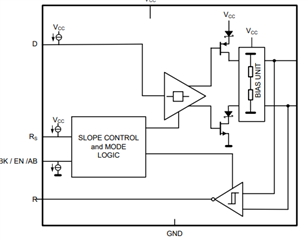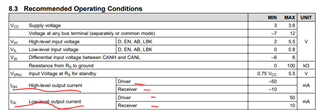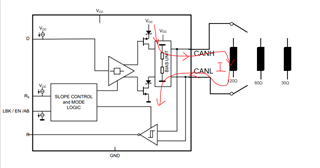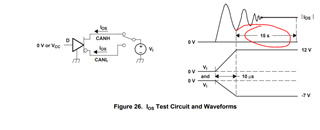hi TI member
-1: when D=0 or D=VCC ,how the Driver operates? does it operate by controling the current through the FET ?
-When D=0 , current through FET is high ,When D=VCC , current through FET is small,is it right ?

2:as reading the datasheet of SN65HVD234;
the parameter of IOH and IOL , I can't understanding it , pls

--- high level or low level is meaning of the TXD signal ot others ?
--does the current is meaning of the VCC Power consumption or the Driver Power consumption ?
-- why the current is 50mA ,is it controlled by the IC internally ?
--when high-level ,why output current is negative (-50mA)?
3:why list the IO of receiver output current here , is it a important parametre ?

thanks





